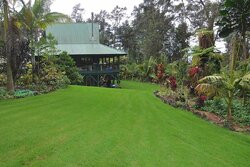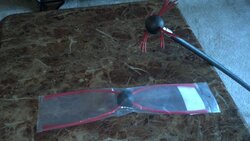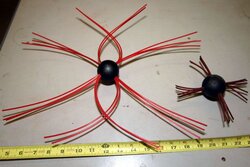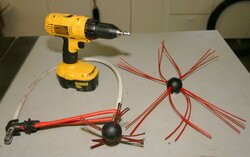This less than satisfactory chimney installation is causing me problems. Here in Hawaii, wood stoves are rare, except at some higher elevations like here. So installers are hard to come by.
This situation, as you can see from the photo, has 16 ft. of 6 inch stove pipe to the interior roof - then another 14 ft of 8 inch chimney pipe.
The problem is that the screen in my cap clogs up about every 9 months and my 6 inch brush does no good once it gets into the eight inch pipe and cap. So I just thrash and bang the brush around once it gets to the cap screen. And that is good enough to knock enough stuff off to get the draw working for another 9 months. But to do so I must disassemble the interior stove pipe, move the stove, etc. - a less than pleasant job.
I think if I could just get the screen cap totally clean once, I would be able to keep it open with the knowledge I have since gained here on proper burning techniques.
Does anyone have a suggestion of a brush or technique that might help clean that cap screen better than my "thrash and bang" technique. Eventually I will have to get a crane in here and just remove the screen altogether. But as you can see, that is a financial and logistical nightmare. And as you can see, the roof is a major safety concern - slippery, step, and high.
Thanks for any and all advice.

This situation, as you can see from the photo, has 16 ft. of 6 inch stove pipe to the interior roof - then another 14 ft of 8 inch chimney pipe.
The problem is that the screen in my cap clogs up about every 9 months and my 6 inch brush does no good once it gets into the eight inch pipe and cap. So I just thrash and bang the brush around once it gets to the cap screen. And that is good enough to knock enough stuff off to get the draw working for another 9 months. But to do so I must disassemble the interior stove pipe, move the stove, etc. - a less than pleasant job.
I think if I could just get the screen cap totally clean once, I would be able to keep it open with the knowledge I have since gained here on proper burning techniques.
Does anyone have a suggestion of a brush or technique that might help clean that cap screen better than my "thrash and bang" technique. Eventually I will have to get a crane in here and just remove the screen altogether. But as you can see, that is a financial and logistical nightmare. And as you can see, the roof is a major safety concern - slippery, step, and high.
Thanks for any and all advice.








